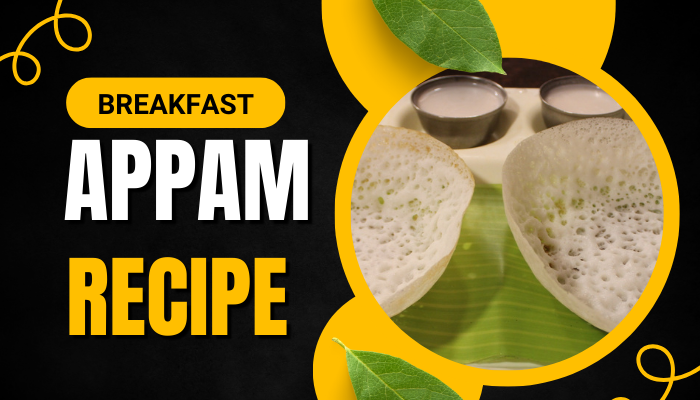Appam is one of the unique dishes of Central Kerala and serves to entice one not only by its unparalleled taste but also by its very beautiful appearance and nice aroma. As it is the product of fermentation it also is heavy on the stomach if eaten ravenously.
Palappam
Palappam is made from raw rice and fresh green coconut. It is a breakfast dish that every Christian home from the richest to the poorest, has on the Christian festival days of Christmas and Easter. Palappam is usually eaten with chicken or mutton stew. A palappam with its soft centre and crisp outer frill is a treat to all the senses!

Ingradients
- Raw rice – ½ kg
- Grated coconut (best to have coconut that is only three
- fourth mature) – 1 ½ to 2 cups
- Salt – to taste
- Yeast – ½ tsp
- Sugar – 2 to 3 tbsp
- Til Oil – 1 tbsp
- Soda bicarb – a pinch
Preparation
Several steps are to be followed in order to make tasty palappam. Here they are one by one.
- Preparing the batter – Soak the raw rice in water for 2 or 3 hours after washing it thoroughly. Drain the water and start grinding the rice along with the coconut adding water. When the grinding is 80% done remove 2 or 3 tbsps of the batter into another pan. Continue grinding the rice and coconut until it becomes a nice paste. Keep in a large vessel. Add 1½ to 2 cups of water to the batter which had been earlier transferred to another pan. Heat this mixture stirring continuously until it boils and thickens. Remove from fire and allow to cool. This is called `kappy’ or cooked starch.
- Preparing the yeast – Put the yeast in a cup containing 50 ml of lukewarm water and 1 tbsp of sugar. Stir well and keep aside for 20 to 30 minutes during which time the yeast will rise and froth.
- Add the cooked, cooled starch and the frothy yeast to the rice batter. Mix well by hand so that there are no lumps in the batter. Add water if necessary. Cover the vessel and leave the batter to ferment at room temperature.
- After 10 to 12 hours the batter will rise and come up to the brim of the vessel. Then stir well, add salt, some more sugar and water if necessary. The batter should be a little looser than dosa batter. Keep aside for 1 or 2 hours to ferment again.
- Take the special pan that is used to make appam. This pan is a small bowl with a flat lid made of cast iron. The inside of the pan is smooth and allows the batter to flow freely. This bowl like pan is thick so that continuous transfer of heat takes place. The best results in making appam are achieved if they are made in a proper appachatty. One could make appams on the dosa griddle too but they will not have the taste or the appearance of standard appams.
- Heat the appachatty and apply a drop of sesame oil on the inside of the appachatty. Pour one ladle of batter into the appachatty which has now become moderately hot. Take the chatty in both hands and swirl once. The batter spreads evenly in the appachatty. Place on the flame and close the appachatty with its lid. Open after one or two minutes. If the edges are slightly brown the appam is done and can be removed using a spatula. With this batter it is possible to make 20 to 25 appams.
Appams which have a white and fluffy centre and crisp edges are indeed a treat to look at and eat. Relish this appetising breakfast with egg roast also.
